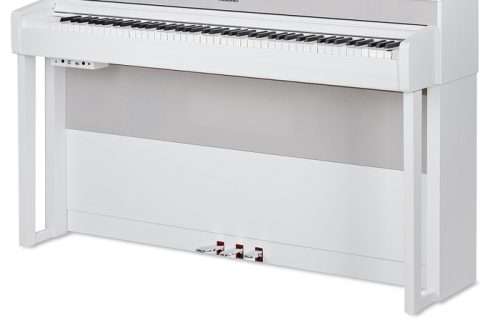Rating of piano manufacturers
Contents
They say that the brilliant Richter did not like to choose a piano before his performance. His playing was brilliant regardless of the brand of piano. Today’s pianists are more selective – one prefers the power of Steinway, while another prefers the melodiousness of Bechstein. Everyone has different tastes, but there is still an independent rating of piano manufacturers.
Parameters to evaluate
To become a leader in the piano market, it is not enough just to produce instruments with excellent sound or to overtake competitors in piano sales. When evaluating a piano company, several parameters are taken into account:
- sound quality – this indicator depends on the design of the piano, mostly on the quality of the soundboard;
- price/quality ratio – how balanced it is;
- model range – how fully represented;
- the quality of the instruments of each model should ideally be the same;
- sales volumes.
It should be clarified that the rating of pianos is somewhat different from the rating of grand pianos. Below we will look at the place of both on the piano market, simultaneously highlighting the features of the most prominent brands.
Premium class
Long-lived instruments, whose service life reaches one hundred years, fall into the “major league”. The elite instrument has an ideal build – its creation takes up to 90% handwork and at least 8 months of labor. This explains the piece production. Pianos in this class are extremely reliable and are highly sensitive to sound production.
The undoubted leaders of the piano market are the American-German Steinway&Sons and the German C.Bechstein. They open the list of premium grand pianos and they are the only representatives of this class of pianos.
Elegant Steinways decorate the world’s most prestigious stages – from La Scala to the Mariinsky Theater. Steinway is respected for its power and rich sound palette. One of the secrets of its sound is that the side walls of the body are a solid structure. This method was patented by Steinway, as were the other 120-plus technologies for creating grand pianos.
Steinway’s main rival, Bechstein, captivates with his “soulful” sound, soft and light timbre. This piano was preferred by Franz Liszt, and Claude Debussy was convinced that music for the piano should be written only for Bechstein. Before the revolution in Russia, the expression “playing Bechsteins” was popular – the brand was so associated with the very concept of playing the piano.
Elite concert grand pianos are also produced:
- American manufacturer Mason&Hamlin – uses innovative technologies in the piano mechanism and a soundboard dome stabilizer. The tone quality is comparable to Steinway;
- Austrian Bösendorfer – makes the soundboard from Bavarian spruce, hence the rich, deep sound of the instrument. Its peculiarity is its non-standard keyboard: there are not 88 keys, but 97. Ravel and Debussy have special works specifically for Bösendorfer;
- Italian Fazioli uses red spruce as a soundboard material, from which Stradivarius violins were made. Pianos of this brand are distinguished by their sonic power and rich sound, deep even in the upper register;
- German Steingraeber&Söhne;
- French Pleyel.
High class
Manufacturers of high-end pianos use computer numerical control (CNC) machines when working on instruments rather than manual labor. At the same time, it takes from 6 to 10 months to make a piano, so production is one-piece. High-end instruments last from 30 to 50 years.
Some piano companies of this class have already been covered above:
- selected models of grand pianos and pianos from Boesendorfer and Steinway;
- Fazioli and Yamaha pianos (S-class only);
- Bechstein grand piano.
Other high-end piano manufacturers:
- grand pianos and pianos of the German brand Blüthner (“singing grand pianos” with a warm sound);
- German Seiler grand pianos (famous for their transparent sound);
- German Grotrian Steinweg grand pianos (exquisite clear sound; famous for double grand pianos)
- Japanese large Yamaha concert grand pianos (expressive sound and sound power; official instruments of many international prestigious competitions);
- Japanese large concert grand pianos Shigeru Kawai.
Middle class
Pianos of this class are characterized by mass production: the production of the instrument requires no more than 4-5 months. CNC machines are used in the work. A middle class piano lasts for about 15 years.
Prominent representatives among pianos:
- Czech-German manufacturer W.Hoffmann;
- German Sauter, Schimmel, Rönisch;
- Japanese Boston (Kawai brand), Shigeru Kawai, K.Kawai;
- American Wm.Knabe&Co, Kohler&Campbell, Sohmer&Co;
- South Korean Samick.
Among the pianos are the German brands August Foerster and Zimmermann (Bechstein brand). They are followed by German piano manufacturers: Grotrian Steinweg, W.Steinberg, Seiler, Sauter, Steingraeber and Schimmel.
Consumer class
The most affordable instruments are consumer grade pianos. They take only 3-4 months to make, but last for several years. These pianos are distinguished by mass automated production.
Piano companies of this class:
- Czech grand pianos and Petrof and Bohemia pianos;
- Polish Vogel grand pianos;
- South Korean grand pianos and pianos Samick, Bergman and Young Chang;
- some models of American pianos Kohler & Campbell;
- German Haessler pianos;
- Chinese, Malaysian and Indonesian grand pianos and Yamaha and Kawai pianos;
- Indonesian pianos Euterpe;
- Chinese pianos Feurich;
- Japanese Boston pianos (Steinway brand).
The manufacturer Yamaha requires special attention – among its instruments, disclaviers occupy a special place. These grand pianos and upright pianos combine both the traditional sound capabilities of an acoustic grand piano and the unique capabilities of a digital piano.
Instead of a conclusion
Germany is the leader among pianos in all respects. By the way, it exports more than half of its instruments. It is followed by the USA and Japan. China, South Korea and the Czech Republic can compete with these countries – but only in terms of production volumes.




